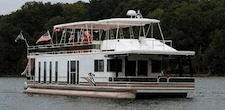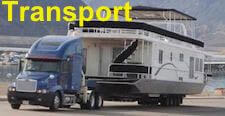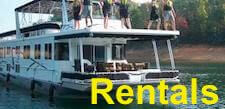Grab your free gift, our online Houseboat Magazine, when you sign up!

Boat Parts - are there freshwater cooling bilge pumps on houseboats?
by IAN from www.all-about-houseboats.com
(Boat Parts - Houseboat Pumps Buyer Guide)

Boat Parts - freshwater pump for houseboats
When it comes to boat parts, there's plenty of confusion when it comes to the various pumps and plumbing that can be found on houseboats. Generally speaking the bigger the boat, and the more equipment and amenities on board, the larger the likelihood of many different types of pumps found throughout.
When it comes to names or terms that you heard for pumps, you likely heard words like freshwater, bilge, seawater, air conditioning, macerator, engine cooling, washdown, and manual pumps.
This easy to use Houseboat Pump Buyer Guide is designed to help you visualize the different uses for each of the common pumps, and where to buy and find parts for them.
You can generally summarize them into four different categories:
FRESHWATER PUMPS: these help pressurize and circulate the hot and cold water plumbing system for use in the shower and sinks in the galley (kitchen) or head (washroom).
AIR CONDITIONING PUMPS: these help circulate lake seawater through the marine air conditioning units like Mermaid Marine, Marine Air, Cruise Air, etc...
BILGE PUMPS: these are generally found under in the hull and engine area, to remove or pump out water infiltration like rainwater or plumbing leaks from the boat. They are a necessity if you don't enjoy the idea of your boat sinking.
ENGINE COOLING PUMPS: these will often be found on your engine and will draw lake seawater to help keep the optimal engine temperature while the motor is running.
 increase sales and profits with targeted traffic? Act now to get our 1/2 price sale, limited offer |
Pump Maintenance:
As you can see, there's a pump for just about every task on your boat, and each requires a little care and maintenance.
When it comes to pumping fluids, there are magnet impeller style pumps, yet the majority
The electrical pumps are generally available in 12 volt DC or 120 volt AC versions and will have some form of overload fuse protection whether a circuit breaker or glass inline fuse.
When looking at the exterior pump housings, you will see a water inlet and a water outlet fitting somewhere on the body. The hose or tubing connections are done either with threaded or slip-on fittings, or in some cases are secured with hose clamps (even double hose clamps are recommended).
If you're in a cold climate, don't forget to winterize all your pumps onboard. You would want to drain any fluid, and preferably run antifreeze thru the whole system.
The hoses or tubing leading up to pumps are often the corrugated, smooth wall, hard plastic PVC, sanitation, or black engine style rubber hoses. Be sure to use the right type and quality of hose or tubing for your specific application.
Looking for Pumps or Parts? If you're looking to buy a pump or are wanting to find parts, here are two excellent sources for boat pumps
Lastly, hopefully some of our readers and visitors will share and post comments about their various houseboat pump experiences.
Feel free to use the "Click here to post comments." link found near the bottom of this page.
Thanks again for sharing, IAN from all-about-houseboats
If you're interested in reading more, here's our article on Houseboat Plumbing - water pressure, tanks, showers, filter, heaters, pumps
Free Bonus Offer |
Comments for Boat Parts - are there freshwater cooling bilge pumps on houseboats?
|
||
|
||
|
||




















